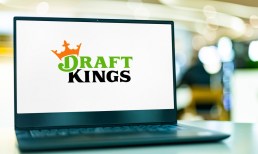The establishment of mobile payment services in Europe has created new ways for consumers to complete financial transactions. Unbanked consumers are offered new platforms to access banking, and consumers already in the financial mainstream can transact like never before.
But do mobile payments come with unseen consequences as well?
A 2013 academic paper titled, Mobile Payments: Problem Or Solution, written by Mike George, Linda Lennard and Kate Scribbins, aimed to explore the implications, both positive and negative, of mobile payments for consumers in vulnerable circumstances.
The development of mobile payments and their ability to improve financial inclusion and consumer protection has been well documented, but do they have a dark side?
Online and mobile banking have been around for a while, but more recent mobile payment schemes include the integration of new entrants, such as telecom companies and mobile network operators. The new services come with distinctive foundations and implications that are important to explore.
Who Are The Vulnerable Consumers?
Advertisement: Scroll to Continue
Current mobile payments frameworks and regulations are lacking consumer protection for Europeans who are considered “vulnerable consumers.” These people can be defined as those with low income or who have difficulties signing up with traditional banking services.
However, before separating consumers into two categories, namely “vulnerable” and “the rest,” it is integral to note that there are individuals who move in and out of the vulnerable category. Consumers can move into a vulnerable state if they have a decrease in household income, job loss, financial hardships or other relevant scenarios.
It is safe to assume that almost any consumer would be adversely affected in the event something bad happened in the financial industry. However, those allocated in the vulnerable category are likely to endure much heavier consequences.
The Dark Side Of Mobile Payments
The mobile payments services available in the UK include eWallets, contactless card payments, intermediary services such as PayPal and access to existing bank accounts. Mobile payment programs such as M-PESA in Northern Africa were installed to mitigate financial exclusion.
Realistically, it may be hard for consumers in other countries, such as the UK, to relate to the success of M-PESA programs because of a drastic difference in lifestyle and demographic.
It is also important to understand that many consumers, particularly vulnerable consumers, with mobile payment programs still remain unbanked. Mobile payment schemes may actually be increasing their financial hardship.
Increased Confusion
The mobile payments landscape is fairly new, but is moving quickly. Some consumers would argue that it’s moving too quickly.
Rapid development in the UK has caused consumers to become overwhelmed and confused. The merging of telecom and mobile networks has added to the complexity, and multiple bundle packages and offers are throwing consumers off balance.
There is more pressure for vulnerable consumers to make the right decision the first time around because they can’t afford to make a mistake. Choosing the wrong package could mean signing up for a program with unmanageable costs and locked contracts.
Furthermore, many of these consumers may have difficulty filing complaints or questions regarding contract terms or transactions. This situation only worsens with more entrants joining the market. Customers don’t know which company handles which liabilities, or where to turn for help.
Barriers To Consumption
The payments industry cannot afford to ignore vulnerable consumers’ needs, since so many people tend to move in and out of this state of despair. While mobile payments are giving alternatives to traditional banking, they must provide more than just an alternative.
There are many barriers to mobile payment consumption, since so many consumers with low income have distinctive needs that are unmet.
Vulnerable consumers are used to budgeting cash payments, and generally prefer to have paper statements to track their spending. Many banks in Europe have gone paperless, which is not ideal for such consumers. Mobile payments offer transaction records through the phone, but a paper trail of documents would better accommodate their needs.
Moreover, many low-income consumers can’t afford a smartphone, which is often needed to complete various NFC and other mobile payment transactions. A phone’s hardware and software are sometimes difficult for consumers to understand, which also represents a significant setback.
Building Solutions
It is important for policy markers and the financial industry to pay attention to the vulnerable consumers and the consequences of mobile payments. If they wish to further promote the adoption of such services, they must understand that the answer does not lie in looking to other regions such as Africa and South America. Consumers in the UK and across Europe have different needs and habits that call for different solutions.
Regulators must closely monitor the emerging issues that arise from mobile payments and prepare to change the framework to better adapt to the vulnerable consumers.
To read the full report click here.



